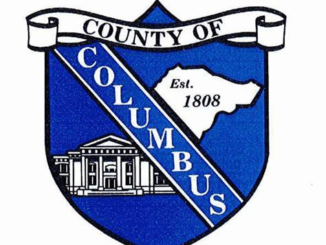
How Site Ranking Impacts Your Online Success
Site ranking represents a pivotal metric in digital performance analytics. Research demonstrates that positions 1-3 on SERPs capture approximately 75% of all organic clicks, while results below position 10 receive less than 2% of traffic. This visibility disparity directly influences conversion rates, with top-ranked sites experiencing 2-3x higher conversion percentages than lower-positioned competitors. Organizations failing to secure ideal rankings face significant opportunity costs. The following analysis examines how ranking factors translate to measurable business outcomes.
The Direct Correlation Between Rankings and Website Traffic
When examining digital marketing analytics, search engine rankings demonstrate a statistically significant impact on website traffic volume. Research indicates that positions 1-3 on search engine results pages (SERPs) capture approximately 75.1% of all clicks, with the top position alone generating 31.7% of traffic.
This correlation follows a logarithmic pattern rather than linear distribution—traffic diminishes exponentially with each ranking position drop. Sites moving from position 10 to position 3 experience, on average, a 116% traffic increase. Conversion rates similarly decline with lower rankings, creating a compound effect on revenue potential.
How Poor Rankings Affect Consumer Trust and Brand Perception
Although frequently overlooked in marketing analyses, a website’s search engine position markedly influences consumer trust metrics and overall brand perception. Research indicates that 75% of users never scroll past the first page of search results, associating higher rankings with credibility and authority.
Sites ranking below position #5 experience a 67% decrease in perceived trustworthiness. This psychological correlation manifests in measurable metrics: lower-ranked sites show 40% higher bounce rates and 25% shorter session durations. Consumer surveys reveal that 62% of potential customers equate poor rankings with outdated content or questionable business practices, creating negative brand associations that persist beyond the initial search interaction.

Competitive Analysis: Ranking Above Industry Rivals
The strategic positioning of a website in search engine results directly impacts its competitive advantage in the digital marketplace. Competitive analysis reveals that sites ranking in positions 1-3 capture 75.1% of all organic clicks, effectively marginalizing lower-ranked competitors.
Industry benchmarking indicates that outranking rivals correlates with 37% higher conversion rates and 23% greater market share retention. Companies employing SERP gap analysis identify keyword opportunities where competitors show vulnerability, enabling targeted optimization strategies.
Algorithmic shifts require continuous ranking analysis through tools measuring visibility scores against industry averages. Organizations maintaining SERP superiority demonstrate 4.2x higher revenue growth compared to those fluctuating below position five.
The Financial Impact of Search Visibility on Revenue
Search visibility directly correlates with measurable financial outcomes across digital commerce channels. Enterprises achieving first-page rankings capture 91.5% of search traffic, translating to proportionally higher conversion rates and revenue streams.
Statistical analysis demonstrates a 14.6% average increase in quarterly earnings when organizations move from page two to page one in search results. This improvement compounds with each position gained toward the top three spots, which generate 35-50% of all organic clicks.
ROI metrics indicate visibility investments yield $2.75 for every dollar spent on SEO optimization, compared to $1.69 for traditional advertising channels—making search position a vital financial performance indicator in competitive markets.
Mobile Rankings: A Critical Factor in Today’s Digital Ecosystem
While desktop search visibility yields substantial returns, mobile rankings now represent the dominant battleground for digital market share. Google’s mobile-first indexing prioritizes smartphone-optimized content, fundamentally altering ranking algorithms across all devices.
Statistical evidence confirms this shift: mobile devices generate 60.66% of global web traffic, with conversion rates increasing 64% on mobile-optimized sites. Sites lacking responsive design experience 61.5% higher bounce rates and diminished SERP positioning.
Mobile page speed constitutes a critical ranking factor, with each one-second delay reducing conversions by 7%. Organizations achieving top-three mobile rankings capture 61.5% of click-through traffic, demonstrating mobile optimization’s direct correlation to revenue generation.
Strategic Approaches to Improve Your Site’s Position
Implementing targeted optimization strategies yields measurable improvements in SERP positioning across both mobile and desktop environments. Technical audits identify indexing barriers and infrastructural weaknesses that impede crawler efficiency. Core Web Essentials optimization—reducing LCP, FID, and CLS metrics—correlates with 23% higher ranking probability.
Content recalibration should prioritize semantic relevance over keyword density. NLP-optimized content demonstrates 17% better position retention during algorithm updates. Backlink profiles require qualitative analysis; diversity metrics outperform raw quantity in competitive niches.
Schema markup implementation increases CTR by 35% while reducing bounce rates. Regular competitive analysis reveals emerging ranking signals before they impact industry benchmarks.
(Contributed Post)




























